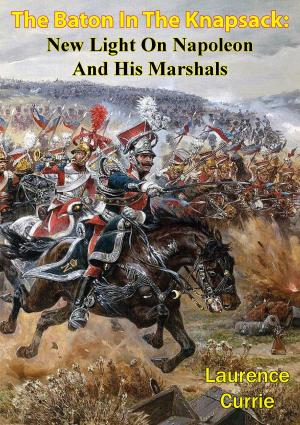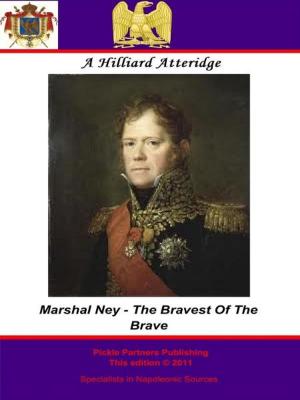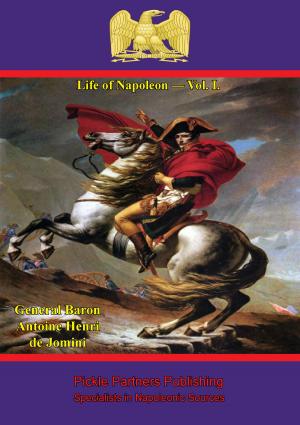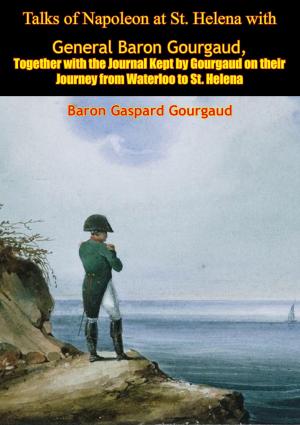War Drama of the Eagles
Napoleon's Standard-Bearers On The Battlefield In Victory And Defeat From Austerlitz To Waterloo
Nonfiction, History, Spain & Portugal, France, Military| Author: | Edward Fraser | ISBN: | 9781908692917 |
| Publisher: | Wagram Press | Publication: | July 27, 2011 |
| Imprint: | Wagram Press | Language: | English |
| Author: | Edward Fraser |
| ISBN: | 9781908692917 |
| Publisher: | Wagram Press |
| Publication: | July 27, 2011 |
| Imprint: | Wagram Press |
| Language: | English |
The eagle of Napoleon was a potent symbol of military might, men fought and died to possess the “cou-cou” that his regiments carried into battle. It represented the fidelity of a regiment to the cause of the French Empire, and more particularly the attachment of the brave warriors who fought beneath it to the greatest general of the age. To lose an eagle was to lose the honour of the regiment, a stain that could not be removed apart from rare cases of exceptional service. Edward Fraser chronicles the history of the Napoleonic eagle standard and the men who fought under them and against them until the final demise of the Napoleonic era after Waterloo in 1815.
Napoleon was well aware of how to stimulate the esprit de corps of his armies with symbols and continuing his innovation of giving distinct standards to specific regiments and recording battle honours on them from his time with the army of Italy, he decided on giving each battalion or squadron and eagle based on his own imperial insignia. The eagle of the battalion was the rallying point for the men in adversity, and a stimulant on the attack guiding the men toward their objective.
Napoleon’s enemies knew the power and cachet of capturing such a standard and fought hard to capture them on battlefields ranging from Borodino outside Moscow to the hot plains outside Cadiz in Spain.
Fraser was a prominent historian of the period having written a number of books on the great battle of Trafalgar and Wellington’s soldiers in the Peninsula. This work was written just before the outbreak of the First World War, with the Entente Cordiale in place, and is therefore more balanced than some of the earlier English works on the period which tended to a more anti-French view.
Illustrations – 10 – all included
Maps – 7 – all included
The eagle of Napoleon was a potent symbol of military might, men fought and died to possess the “cou-cou” that his regiments carried into battle. It represented the fidelity of a regiment to the cause of the French Empire, and more particularly the attachment of the brave warriors who fought beneath it to the greatest general of the age. To lose an eagle was to lose the honour of the regiment, a stain that could not be removed apart from rare cases of exceptional service. Edward Fraser chronicles the history of the Napoleonic eagle standard and the men who fought under them and against them until the final demise of the Napoleonic era after Waterloo in 1815.
Napoleon was well aware of how to stimulate the esprit de corps of his armies with symbols and continuing his innovation of giving distinct standards to specific regiments and recording battle honours on them from his time with the army of Italy, he decided on giving each battalion or squadron and eagle based on his own imperial insignia. The eagle of the battalion was the rallying point for the men in adversity, and a stimulant on the attack guiding the men toward their objective.
Napoleon’s enemies knew the power and cachet of capturing such a standard and fought hard to capture them on battlefields ranging from Borodino outside Moscow to the hot plains outside Cadiz in Spain.
Fraser was a prominent historian of the period having written a number of books on the great battle of Trafalgar and Wellington’s soldiers in the Peninsula. This work was written just before the outbreak of the First World War, with the Entente Cordiale in place, and is therefore more balanced than some of the earlier English works on the period which tended to a more anti-French view.
Illustrations – 10 – all included
Maps – 7 – all included

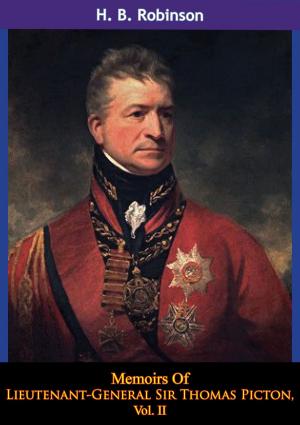


![Cover of the book The Hundred Days [Illustrated Edition] by Edward Fraser](https://www.kuoky.com/images/2015/november/300x300/9781786255020-3HBR_300x.jpg)
![Cover of the book History Of The Expedition To Russia, Undertaken By The Emperor Napoleon, In The Year 1812 [Illustrated Edition] by Edward Fraser](https://www.kuoky.com/images/2016/july/300x300/9781786259851-gtKX_300x.jpg)
![Cover of the book Nelson And His Captains: Sketches Of Famous Seamen [Illustrated Edition] by Edward Fraser](https://www.kuoky.com/images/2015/november/300x300/9781786253736-0YSn_300x.jpg)

